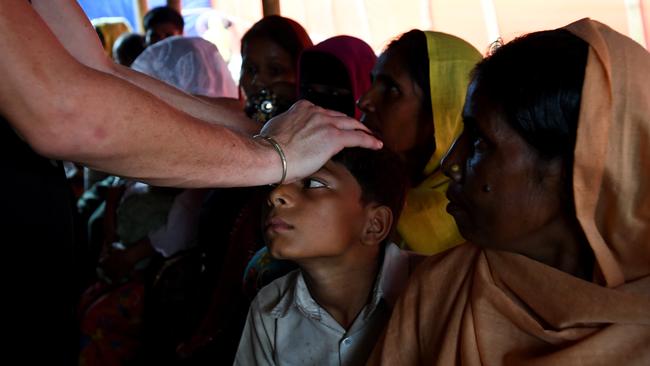Try killing disease – WHO needs a nanny?

When the WHO was first established, in 1948, preventable diseases were common, with healthcare often unavailable. Its programs focused on developing countries, with sanitation and vaccination as major priorities. Eradicating smallpox and the near eradication of measles, rubella and polio have been big successes.
Many of its current campaigns are similar — improving childbirth outcomes in poor societies, vaccination campaigns to control cholera, Ebola and yellow fever, and developing an effective vaccine against malaria among them.
But it has also extended its remit far beyond communicable diseases and health emergencies. A lot of resources are now devoted to promoting regulatory interventions to combat “lifestyle” diseases, with campaigns against tobacco, alcohol, sugar, salt and other issues that are ultimately matters of personal choice.
Indeed, it has become a massive advocate for the nanny state. Its default position is to deny people the right to manage their own health and lifestyle in favour of authoritarian measures such as mandatory health warnings, prohibition legislation, advertising bans and excise taxes. It has even embraced gender fluidity.
In 2018-19, the WHO’s budget was $US4.4bn, with $US351m allocated to “non-communicable diseases” and $384m for “promoting health through the life course”, a program that includes “equity, social determinants, gender equality and human rights”.
Member states each make a contribution based on their GDP, but that only covers about 20 per cent of the budget. A further 5 per cent comes from voluntary contributions by member states, leaving 75 per cent from other sources. The US is by far the biggest contributor and Britain is second (Australia is 19th), but the third-biggest is the Bill and Melinda Gates Foundation. In fact, just 20 donors contributed 80 per cent of the WHO budget, of which only 13 are national governments, including the European Commission.
Despite its reliance on non-government donors, the WHO’s intervention into non-communicable diseases is not obviously a result of pressure by them. None of the donations by the major philanthropic organisations contribute to funding this. About half of this nanny state allocation is taken from the assessed contributions of member states, while the other half comes from voluntary contributions by nine countries, including Britain, the Scandinavian countries and Australia.
It is more likely these countries are behind the program. It is not hard to imagine Australia’s delegates pushing the WHO in the nanny state direction. Our domestic policies on alcohol, tobacco and other lifestyle issues are among the world’s most intrusive.
Australia’s enthusiasm for the WHO’s involvement in this area is obviously not widely shared. There is a clear gap between the WHO’s aspirations and the funding it receives from donors. This is leading to some scaling back of activities, although there is no indication it plans to change tack.
What this demonstrates is that by no longer sticking to communicable diseases and health emergencies, the WHO has become quite political. Whereas once its priorities were largely driven by need — people suffering and dying — it now assumes everyone aspires to live forever and requires its guidance to do so.
A global organisation capable of helping the less fortunate people in the world is not an inherently bad idea. The question is whether that’s what we’ve got.
David Leyonhjelm is a former senator for the Liberal Democrats.



The World Health Organisation has been criticised a lot lately, including for its farcical initial response to COVID and its origins. But criticism of the WHO did not begin with COVID. It has been growing for years. Many are now asking whether the organisation has reached its use-by date.